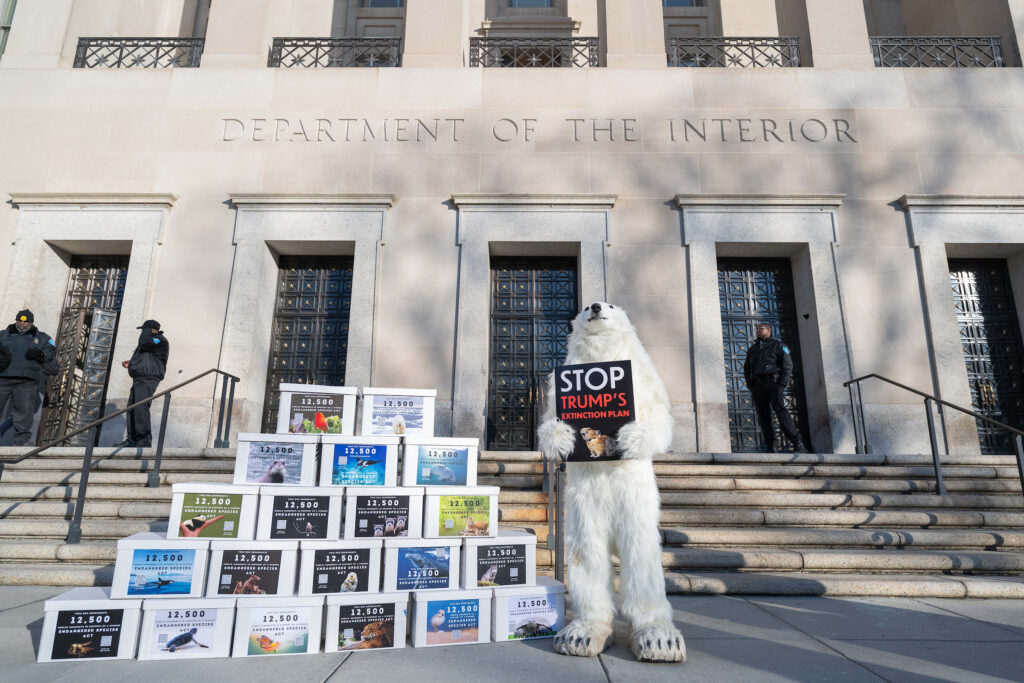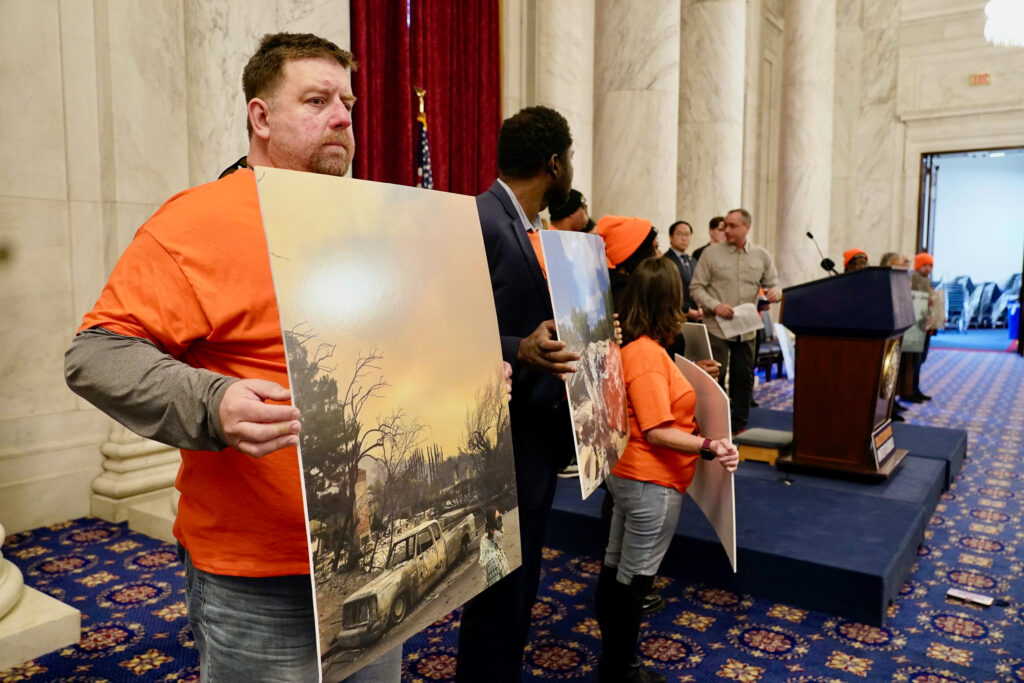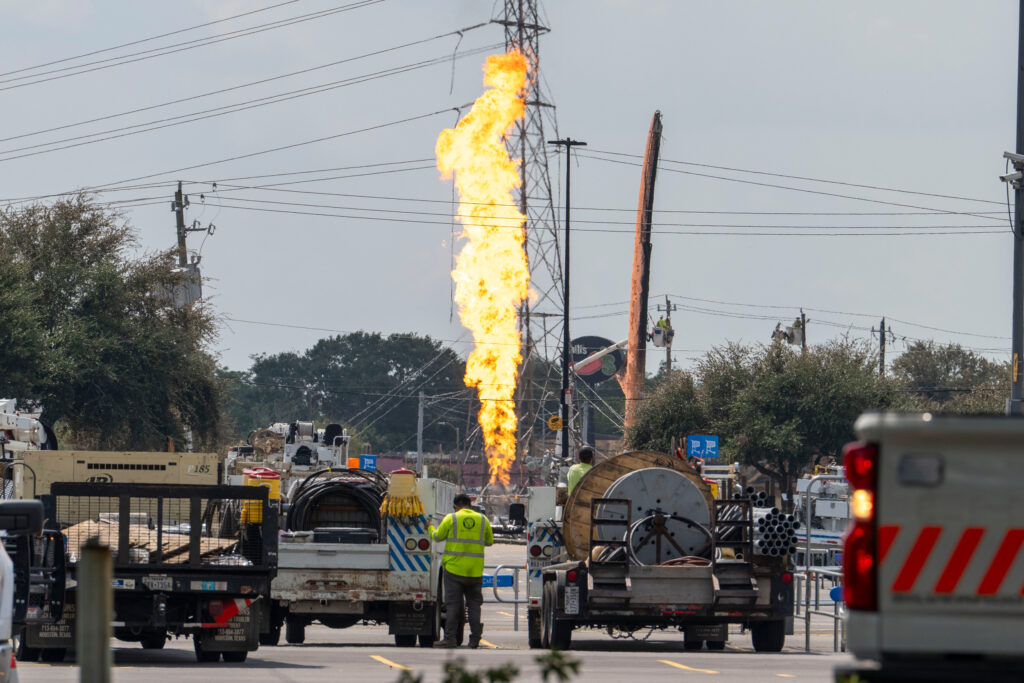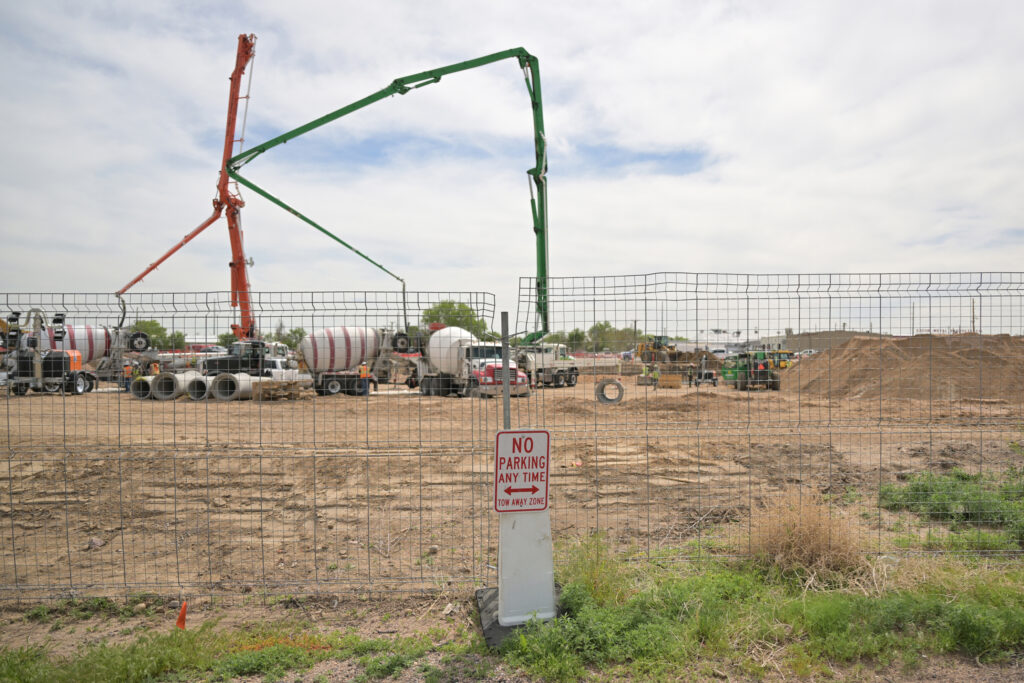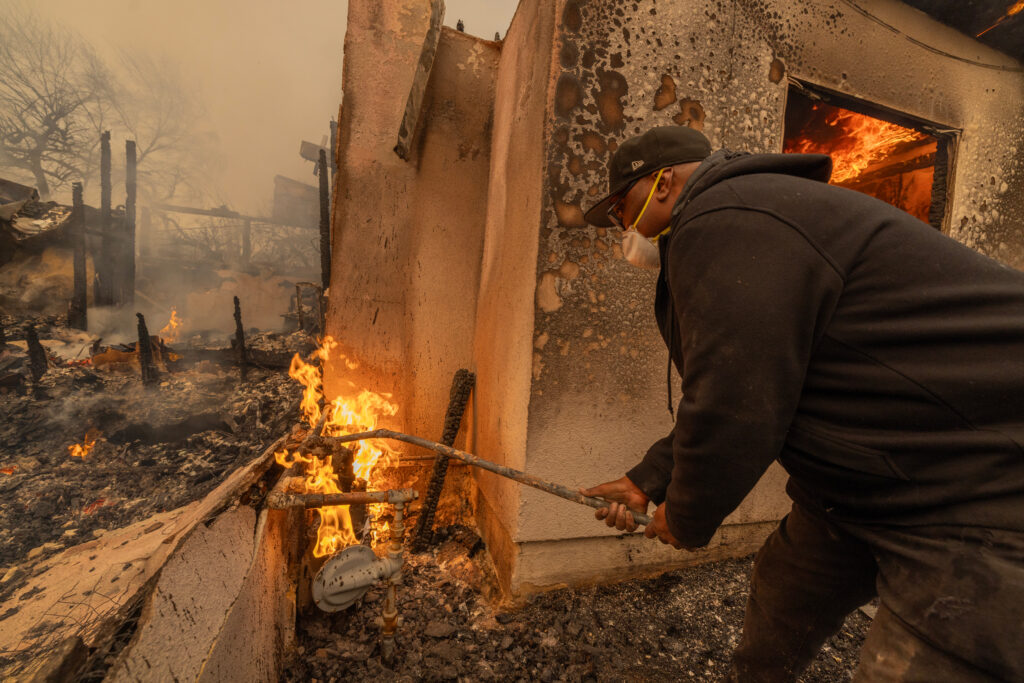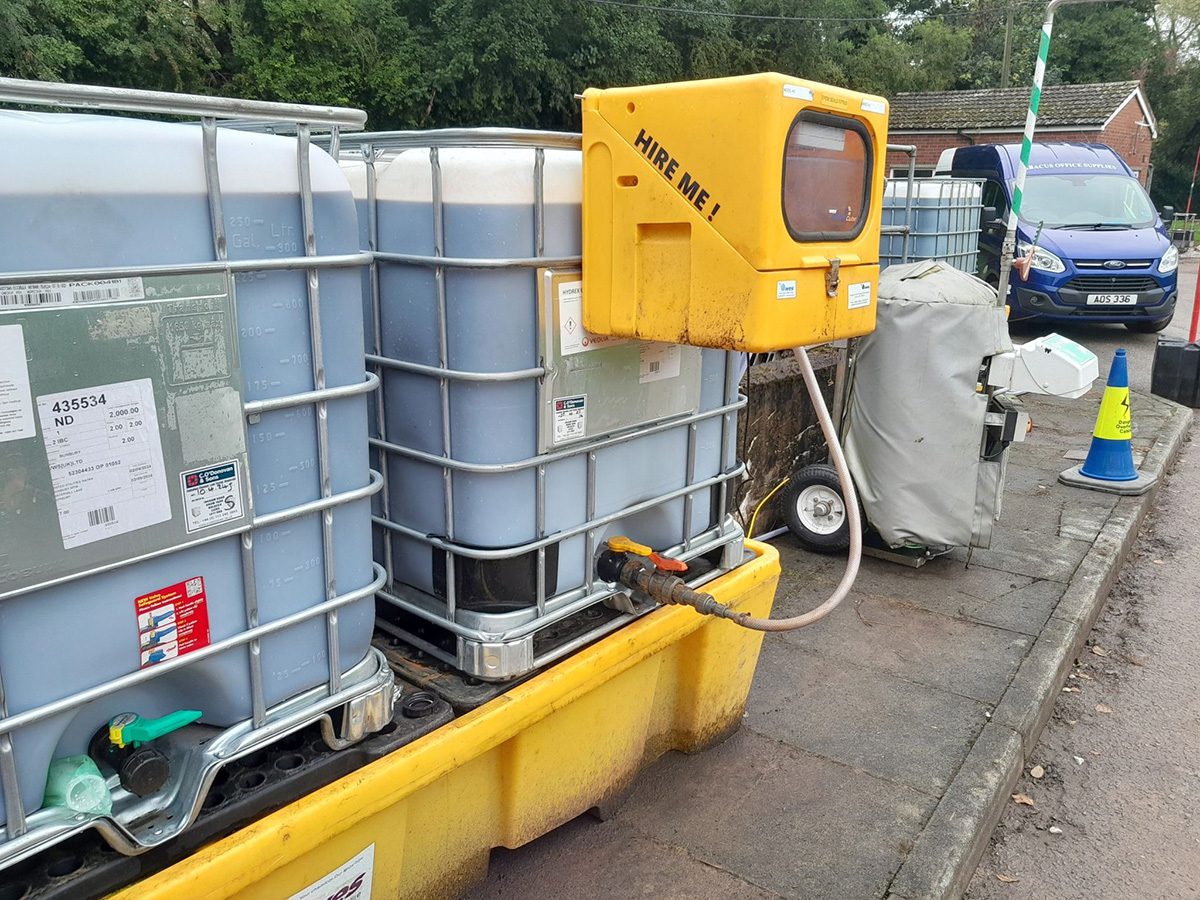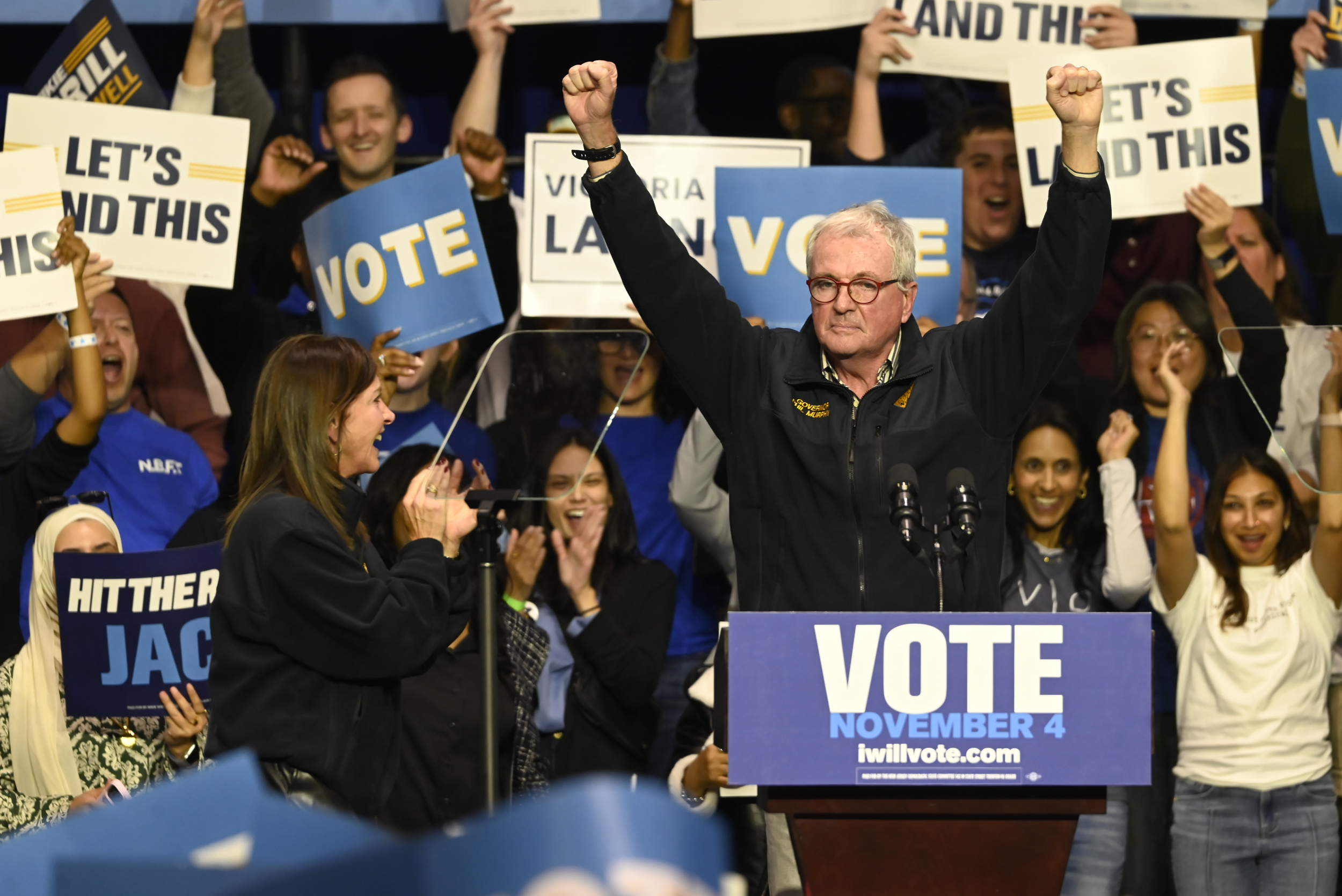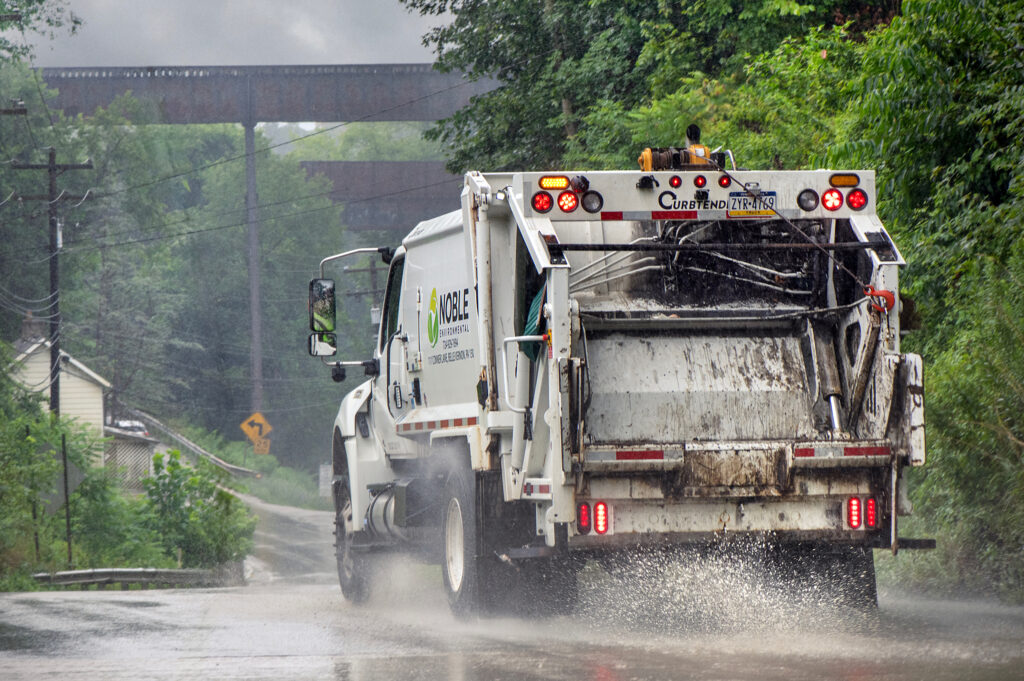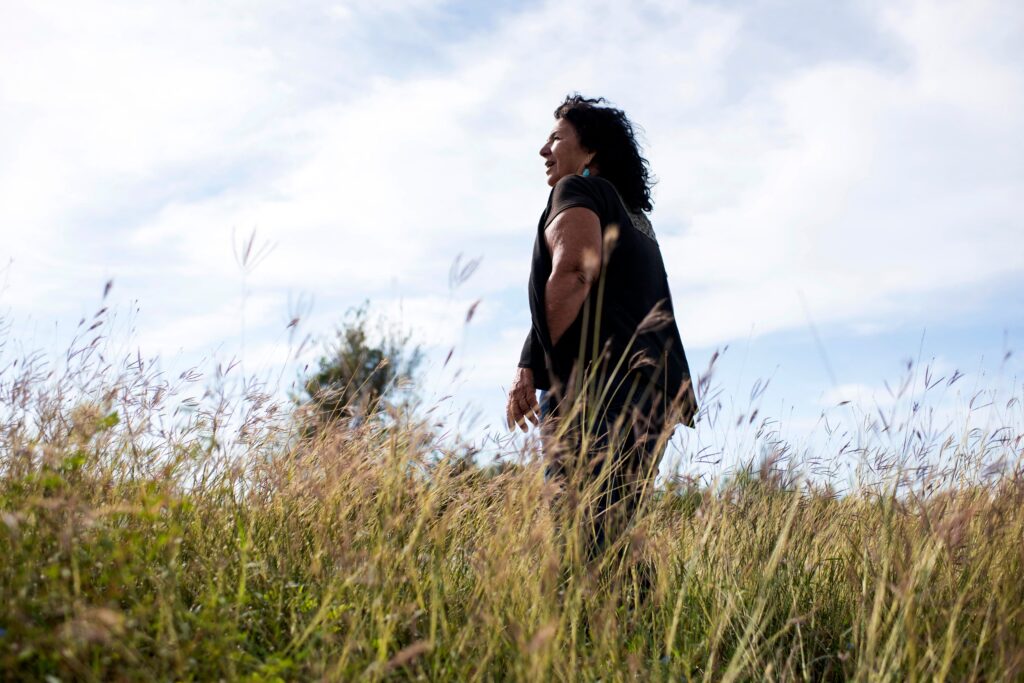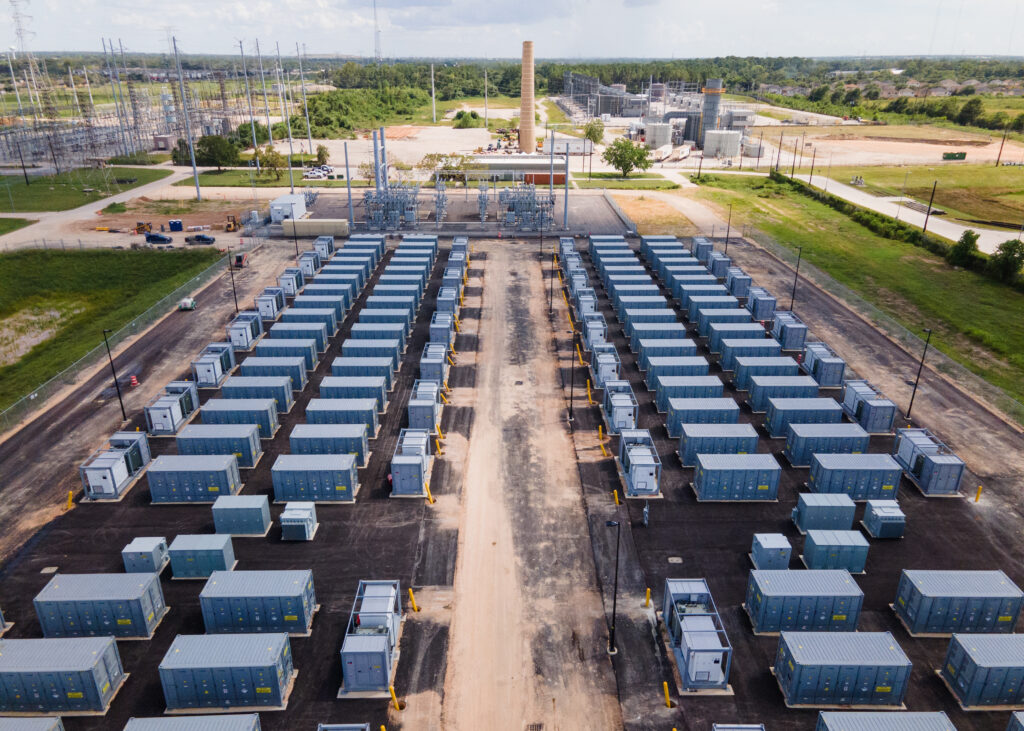When José Gualinga took the stage in a packed New York University law school auditorium in September, he admitted to feeling emotional.
His audience had just watched the premiere of the documentary “Allpa Ukundi, Ñukanchi Pura” (Underground, Around and Among Us). The film showcases the Indigenous Kichwa People of Sarayaku and their pioneering efforts to defend their territory in Ecuador against intensifying environmental crises and relentless extractivism.
Gualinga, a Sarayaku leader, took the audience back to 1986, when he began codifying ancestral knowledge from community elders, developing what would later become the “Declaration of Kawsak Sacha” (or “Living Forest”).
At the heart of the declaration is an explanation of how Sarayaku people have always understood their Amazonian territory: as a living, intelligent forest—not a collection of resources for humans to exploit, as the Western world believes.
In the mid-1990s, as Gualinga was working on putting Kawsak Sacha into words, the Ecuadorian government permitted an Argentine oil company to forcibly operate on Sarayaku’s territory.
With armed government escorts, the company drilled holes into the forest floor, depositing high-power explosives for oil exploration. When the community peacefully resisted, the government violently cracked down, attacking women and children and torturing four community leaders. The company’s operations were halted in 2004, but Gualinga knew the company could return, or Sarayaku could face a more formidable force.
That’s when he formally proposed the “Declaration of Kawsak Sacha” to Sarayaku’s first Congress, which adopted the visionary proposal for a new legal category for nature: a living being with rights.
Ecuador’s strong Indigenous movements, including Sarayaku, led the way in cementing the idea in the country’s new constitution in 2008. Nature, the document says, has inherent rights to exist, regenerate and be restored when harmed.
Still, as Gualinga had predicted, the oil company returned to Sarayaku. He and other leaders went to the Inter-American Court of Human Rights, arguing that they were never consulted about the operations and explaining Kawsak Sacha: The living forest is full of beings, all of whom are interconnected, they said, and any destruction—”the extermination of life”—was intolerable.
In 2012, the court ruled that Ecuador violated the Sarayaku people’s right to free, prior and informed consent and ordered the government to remove all explosives from their territory. The government has yet to fully comply, according to a 2023 Ecuadorian Constitutional Court ruling.
Today, the case is widely considered a landmark precedent on the rights of Indigenous peoples, and one that laid the groundwork for a breakthrough ruling this July, when the Inter-American court said that recognizing nature’s rights is essential to protect ecosystems over the long-term.
Sarayaku’s Kawsak Sacha has also inspired philosophical shifts among Western intellectuals, lawyers and activists, and has led to more laws around the world that recognize nature as a living entity with rights.
The documentary “Underground, Around and Among Us” shows how Sarayaku is taking Kawsak Sacha even further by building partnerships with Western scientists to exchange knowledge about the intelligence of nature.
The film follows a team of scientists from organizations including the Fungi Foundation as they visit Sarayaku to gather and analyze soil samples. The team’s findings, a catalog of thousands of fungi species, provided external evidence that Sarayaku’s rotational agricultural system allows the forest to easily regenerate.
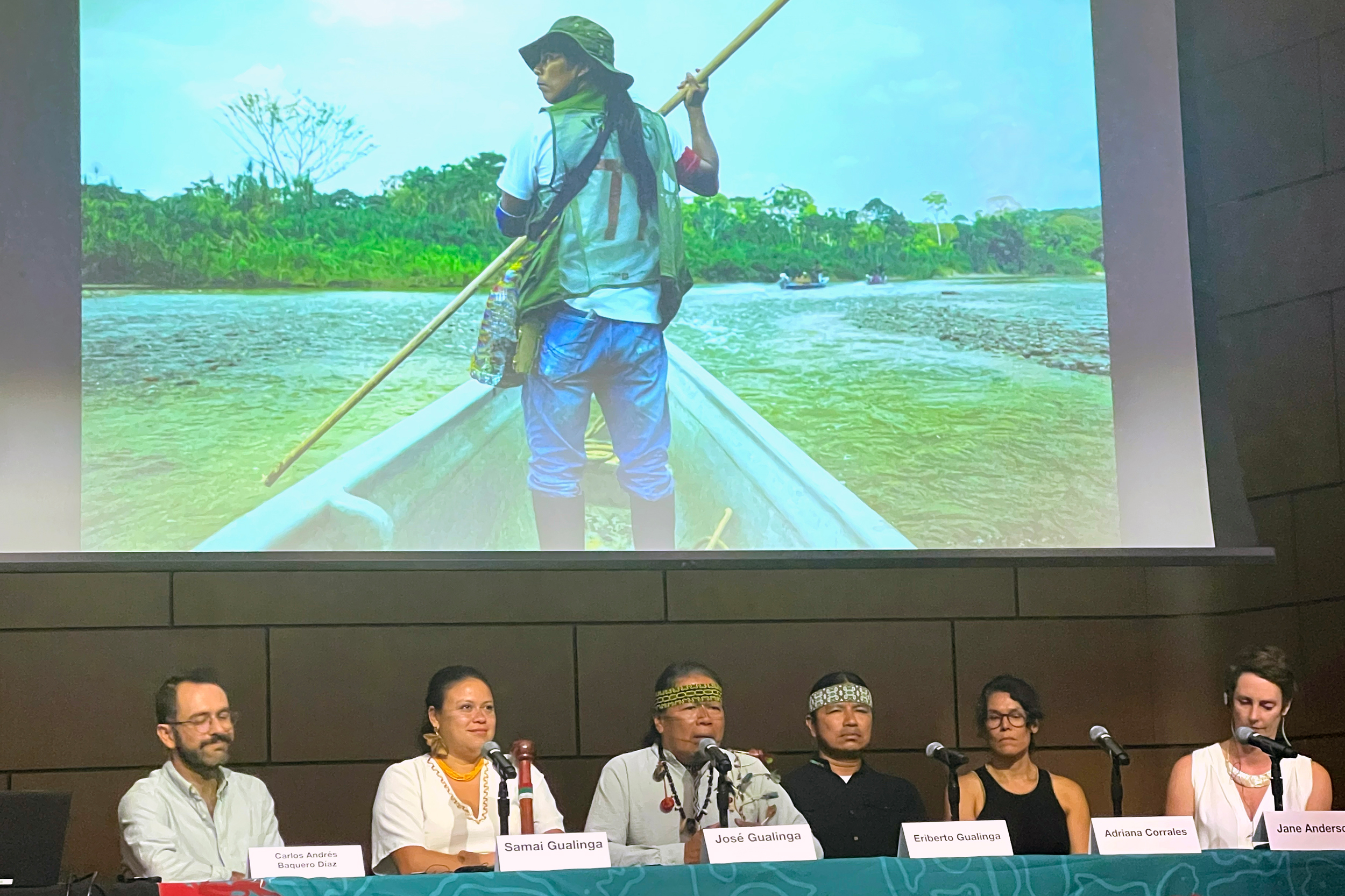
The presence of high amounts of mycorrhizal fungi, which form complex underground networks that shuttle nutrients among plant life, also mirrored something Sarayaku has long known: that their forest communicates with itself through a network that is similar to a spiderweb, supporting all life, Gualinga said.
Sarayaku has established similar knowledge-sharing partnerships with wetlands scientists, lawyers, universities and others, deepening humans’ understanding about the Earth.
“These types of dialogues are absolutely crucial to increase our chances of survival as a species on this planet,” said Carlos Fontes, a retired professor of communication and global studies at Worcester State University who has worked with Sarayaku for more than a decade.
Fontes wasn’t involved in the fungi project but has helped facilitate other collaborations between Sarayaku and Western scientists. “It’s urgent that people in the West understand that we are surrounded by intelligence, that we are part of a community of life,” he added.
Inside Climate News talked with José Gualinga in September about Kawsak Sacha and Sarayaku’s partnerships with Western scientists. This conversation has been translated from Spanish and lightly edited for length and clarity.
KATIE SURMA: What prompted you to write Kawsak Sacha?
JOSÉ GUALINGA: The journey began in 1986, a time when our lands and territories legally had no identity of their own. These lands were considered “tierras baldías” [empty lands] by law—thought of as “no man’s lands.”
My father, myself and other friends traveled deep into the forest, into the areas of the black lagoons, located at the limits of our territory where our ancestors once lived. It was here that we had the idea of planting all sorts of palm trees throughout to defend it and let the colonizers know that we existed and truly inhabited these territories.
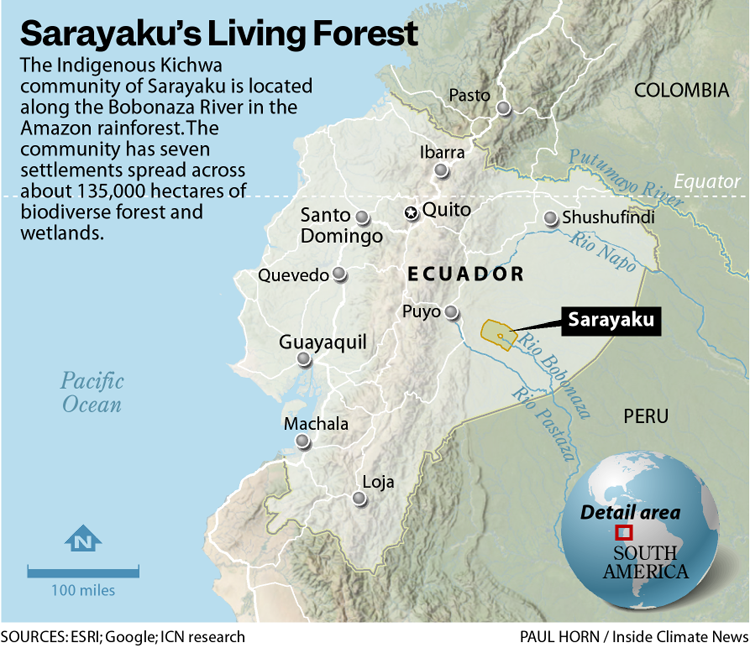

From 1986 on, I started to research our ancestral knowledge by speaking with my father and other elders to better understand the Living Forest (Kawsak Sacha). I spent the next 10 years collecting, interpreting and writing about this knowledge. In 2004, I presented a proposal about our ancestral knowledge and our real experience of living in the world of the forest at our first Congress of Sarayaku. Since then, the Living Forest proposal has crossed borders. I could never have imagined then how far it has reached.
It makes me feel elated to have put forth this proposal, that we have even reached academia and that many young people are moving this vision forward.
We want to make clear that there is an intrinsic connection between us and the forest and the beings that dwell in it. This is our fortitude. Our living is more than scientific evidence. This connection is what has allowed us to exist thus far.
SURMA: For people who aren’t familiar with ecocentric thinking, how would you describe Kawsak Sacha?
GUALINGA: We have worked on a definition, and it is quite complex to understand the conception of Kawsak Sacha. We have worked with a multidisciplinary team to translate it from the symbolic Kichwa language into Spanish.
Kawsak Sacha is a living, intelligent being with consciousness, similar to us, but which we cannot see. The invisible being is connected from the smallest, the micro, the infinitesimal, to the largest. The stones are also alive. It is a pluriverse, and it connects itself with many leaders or wise elders. Through them, life is inspired, and we learn methodically.
Socially, Kawsak Sacha is a way of life. It is an education. Indigenous peoples are at risk of losing this connection and communion and simply becoming peasants. Indigenous peoples differentiate ourselves because we have a history, a wisdom and a knowledge. That is what characterizes and differentiates us from other cultures.
It is also an act of resistance—a peaceful struggle in the political, legal, scientific, academic and spiritual realms—to claim territorial rights.
SURMA: Why did you choose to work with scientists?
GUALINGA: The proposal of Kawsak Sacha is generally unknown to the Western world—academic, scientific, legal and political. They [the Western world] hold the Eurocentric view that the wisdom of Indigenous peoples is merely a legend or a myth, and therefore has no academic value.
We consider this dialogue very important because it represents a struggle and resistance that we, as Indigenous people, engage in to be understood and academically backed.
We have to speak with scientists. They have their modern knowledge, which is technological, and we have our wisdom. We must sit face-to-face. We’ve already had these conversations with jurists and academics at universities in Quito and at research centers.
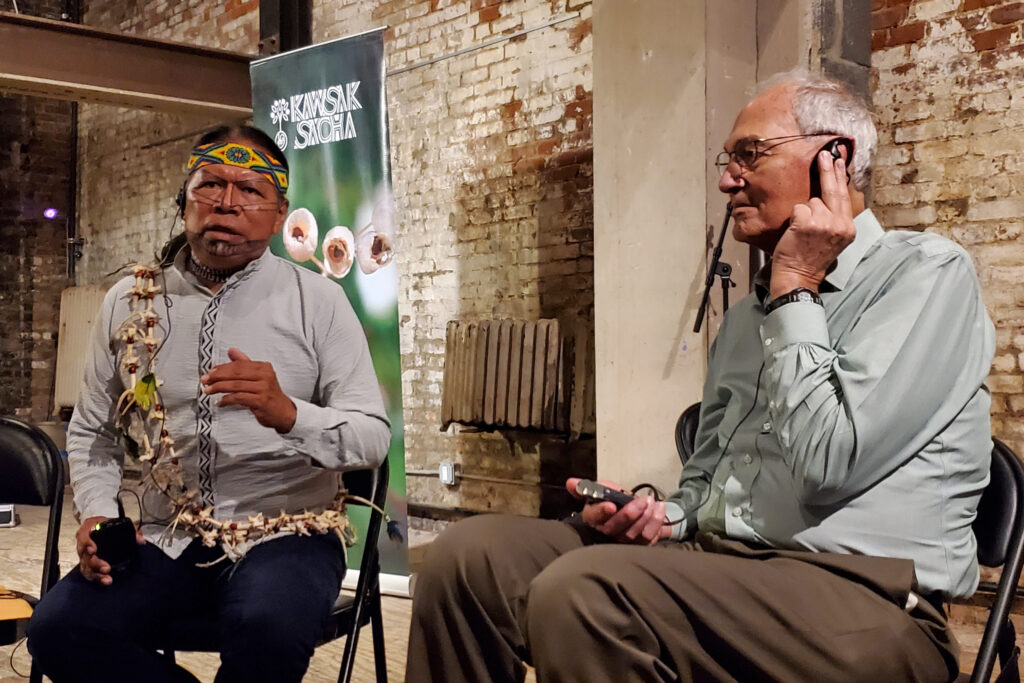

It seemed very important to us to have a convergence, a conversation, between modern scientific thought and the wisdom of Indigenous peoples. Our research with scientists and institutions can provide a very important argument.
We face a huge threat and need legal support from [Ecuador’s] government, specific ministries and the Constitutional Court. They must understand that our forest is a living, pulsating territory.
SURMA: The wetlands scientists said that they perceive the methods of your knowledge system as quite similar to their own methods. How do you see the two?
GUALINGA: Scientists, whether in biology or other fields, always rely on the laboratory. It is statistics, laboratory work, measurement—”glass in glass.” If they don’t have this, scientists cannot affirm what they study and know.
Our approach is not this. Our laboratory, our worldview, is very different; it comes from the origins of our ancestors. For us, a tree is a living being, and so are the lagoons and the mountains.
This has been the guarantor of our history. It is the proof of our history. It is like a permanent lab. They study DNA and molecules, but we connect through our visions. These two things are often not understood, so dialogue is very important for this convergence and for joining forces to address the environmental crisis.
This story is funded by readers like you.
Our nonprofit newsroom provides award-winning climate coverage free of charge and advertising. We rely on donations from readers like you to keep going. Please donate now to support our work.
Donate Now
SURMA: If other Indigenous communities wanted to engage in similar collaborations with Western scientists, what advice would you give them?
GUALINGA: It is not easy to collaborate. There is a long history of knowledge extraction. There is theft of wisdom. Often, they call us superstitious, saying our knowledge is a legend or a utopia. But at the same time, academics come to extract the information.
This is called knowledge extractivism. It is colonial. Many communities close themselves off because they know there is a lot of information, and there is also biopiracy. So, they are not going to be openly involved in many such engagements.
However, before the threat of globalization, before the threat of capitalism and consumerism takes over everything, we have to find alternatives and strategies to defend ourselves.
SURMA: Sarayaku’s Kawsak Sacha has been extremely influential. I understand other communities, across continents, are learning from it.
GUALINGA: Yes, the Kawsak Sacha proposal is built on the idea of beings that are alive and intelligent throughout our worldview, including the lagoons, the trees, the swamps and the waterfalls. They all have protective beings—they are invisible, but they are similar to us.
So, this proposal is, for us, advanced knowledge—not in technological terms, but as a principle of life. Many communities are inspired by this proposal because we have also shared it. We have exchanged this message with people and organizations across Africa, Latin America and Asia.
SURMA: What do you see right now as the biggest threats to Sarayaku and to nature in general?
GUALINGA: The greatest danger is the advancement of the system of the globalized world. Specifically, the system of formal education, which slowly colonizes the mind. It is important to study, but if we do not strengthen our identity and our history, youth transform themselves. When they lose track, it leads to more exploitative negotiations, under the guise of the theory of development.
When people adopt this conception of “development,” they lose the capacity to resist. A mining company comes—that’s “development.” An oil company comes—that’s “development.” A road passes—that’s “development.” For us, this means poverty and misery, because when the forest is destroyed, we are no longer able to live the same life as a society.
If knowledge is lost, the Indigenous world disappears. An Indigenous people without knowledge and without history can exist physically, but culturally, the knowledge no longer exists—it dies.
“This progress toward the rights of nature is a response to the separation of the human being from nature. When there is a separation, nature becomes an object of exploitation.”
— José Gualinga
SURMA: The rights of nature movement is growing. What do you attribute that to?
GUALINGA: In 2008, Ecuador’s constitution recognized the rights of nature, and our parents and several leaders participated in the constituent assembly.
There are currently legal acknowledgments that are fragmented: Sometimes they recognize a river as a living being, or a mountain or a lagoon. But Kawsak Sacha is all in one.
This progress toward the rights of nature is a response to the separation of the human being from nature. When there is a separation, nature becomes an object of exploitation.
Now, with the social and environmental crisis, humanity is trying to return, to be born again, because there is no other way out. There is huge inequality among societies, and on the other hand, it is like committing suicide. Pollution, destruction and garbage are contaminating everything—the sea, space and the jungle are being destroyed more and more. The Earth will not be able to sustain itself.
SURMA: How do you see Indigenous peoples’ rights and nature’s rights? Are they the same?
GUALINGA: Yes, it’s the same. We are nature. We are Kawsak Sacha.
About This Story
Perhaps you noticed: This story, like all the news we publish, is free to read. That’s because Inside Climate News is a 501c3 nonprofit organization. We do not charge a subscription fee, lock our news behind a paywall, or clutter our website with ads. We make our news on climate and the environment freely available to you and anyone who wants it.
That’s not all. We also share our news for free with scores of other media organizations around the country. Many of them can’t afford to do environmental journalism of their own. We’ve built bureaus from coast to coast to report local stories, collaborate with local newsrooms and co-publish articles so that this vital work is shared as widely as possible.
Two of us launched ICN in 2007. Six years later we earned a Pulitzer Prize for National Reporting, and now we run the oldest and largest dedicated climate newsroom in the nation. We tell the story in all its complexity. We hold polluters accountable. We expose environmental injustice. We debunk misinformation. We scrutinize solutions and inspire action.
Donations from readers like you fund every aspect of what we do. If you don’t already, will you support our ongoing work, our reporting on the biggest crisis facing our planet, and help us reach even more readers in more places?
Please take a moment to make a tax-deductible donation. Every one of them makes a difference.
Thank you,




